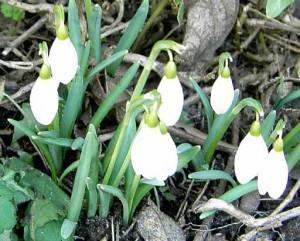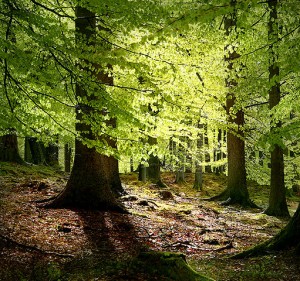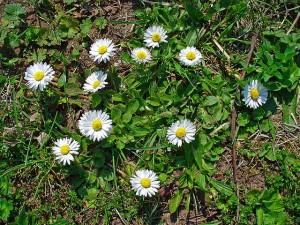Spring has come to Denmark, and even indoor fanatics can’t help noticing that leaves are sprouting and flowers opening… The boring winter country has been magically transformed into a wonderful garden. Knowing the names of some of the most typical blomster (flowers) and træer (trees) will never be as relevant as right now:

Vintergækker.
Vintergækker (snowdrops, literally ”winter jesters”) are some of the very first flowers to appear on the græsplæner (grass lawns).
Next in line are the violet/yellow/white krokus (crocus) and the yellow erantis (winter aconite).
Bøgen (the beech) is Denmark’s national træ (tree). It’s mentioned in the country’s national anthem, ”Der er et yndigt land” (”There is a lovely country”), in the lines:
Vort gamle Danmark skal bestå
så længe bøgen spejler
sin top i bølgen blå
Our old Denmark will remain
as long as the beech mirrors
its top in the blue wave
Indeed, walking (or running!) in a skov (forest) full of nyudsprungne bøge (beeches with new leaves) is one of the most refreshing things you can do in Denmark. The blade (leaves) can be eaten as salad while they’re still lysegrøn (light green).

Nyudsprungne bøgetræer. New beech leaves in a Danish forest.
Mellem bøgene (between the beeches), på skovbunden (on the forest floor), you may be lucky to see the lovely, star-shaped anemoner (anemones). 99 % of them are hvid (white), but in a few places you can catch a glimpse of a blå anemone (blue anemone).
If you walk or cykler (ride your bike) through a typical Danish villakvarter (residential neighboorhood), there is a chance that you’ll catch the sweet duft (fragrance) of the snowy kirsebærblomster (cherry flowers) in bloom on the kirsebærtræer.
In case you feel like sitting down in the græs (grass), I wouldn’t be surprised if you could already spot a few tusindfryd (daisies, literally ”thousand joys”), the typical Danish summer flowers. With klimaforandringerne (the Climate Changes), you just never know! 🙂

Tusindfryd.







